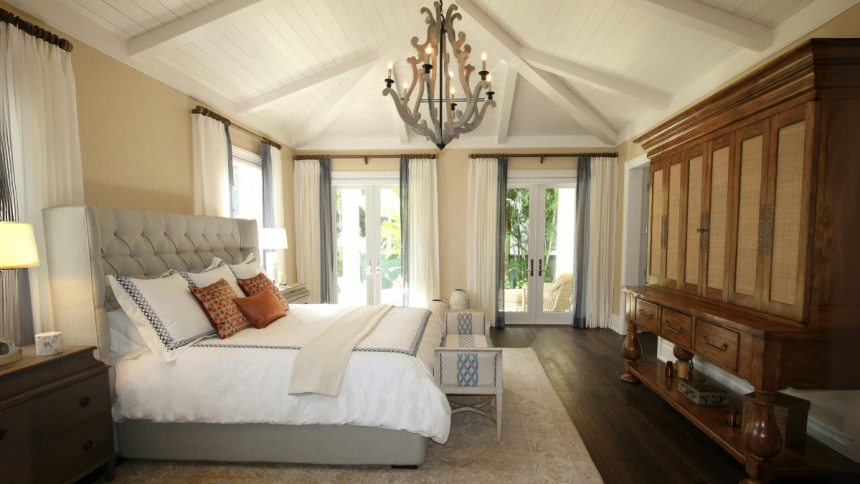Let’s be honest—most of us want a better night’s sleep, but we rarely think about what we’re sleeping in or surrounded by. From mismatched sheets to blinding lights, there’s a lot that gets in the way of proper rest. The good news? A few smart changes can turn your sleep space into the relaxing retreat it’s meant to be.
People across the world are switching things up for the better. And no, we’re not talking about full makeovers or designer budgets. We’re talking about simple swaps—affordable, practical, and surprisingly effective. Ready to make your space calmer, cooler, and comfier? Let’s get started.
Embracing a Minimalist Approach
Too much stuff can make it harder to relax. Piles of clothes, scattered items, or old furniture often create a feeling of stress. Clearing out what you don’t need and keeping only the essentials creates more space and less distraction. Try using under-bed storage, baskets, or even donating unused items. You’ll be surprised how quickly the area feels lighter. A tidier layout can also make your morning and evening routines feel easier, simply because everything has its place.
Switching to Sustainable and Soft Sleep Materials
Many people are rethinking what they sleep on and under. Materials matter, especially when it comes to breathability and comfort. Traditional cotton or polyester doesn’t always provide the softness or temperature control we really want. That’s why more households are turning to bamboo bedding like the one Panda offers. Silky-soft options that are breathable, hypoallergenic, and eco-friendly not only ensure a better quality of sleep but are also safer. It helps regulate temperature all year round, so you stay cool in summer and cosy in winter—naturally.
Replacing Harsh Lighting with Soft, Warm Options
Lighting affects how we sleep more than we realise. Bright ceiling lights or blue-tinted bulbs can confuse our internal clocks, making it harder to unwind and get a good night’s sleep. Switching to warm lighting, such as through bedside lamps, fairy lights, or dimmable bulbs, helps signal to the body that it’s time to relax. Look for bulbs labelled “warm white” or “soft glow.” These are ideal for evening use. And if you enjoy reading before bed, consider choosing a lamp with an adjustable arm, allowing you to direct the light where it’s needed without flooding the entire space.
Swapping Busy Wall Colours for Calming Tones
Bright colours might look fun, but they’re not always relaxing. Increasingly, people are opting for neutral or earthy tones to create a calm and balanced environment. Soft greys, muted greens, warm whites, or pastels are effective in reducing visual stress. These tones also give you more flexibility when it comes to styling or adding accent pieces. A quick coat of paint can completely transform the room’s ambiance without altering anything else.
Replacing Standard Curtains with Blackout or Thermal Drapes
Curtains do more than block light—they affect how well you sleep and how warm the space stays. Blackout curtains are especially useful for those who are sensitive to early morning light or live in areas with street lamps. Thermal drapes add insulation, keeping rooms cooler in summer and warmer in winter. Both options support better sleep while also reducing energy bills. Choose styles that match your decor but offer real function behind the design.
Ditching Tech for a Screen-Free Wind-Down Routine
Screens are an integral part of daily life, but using them too close to bedtime can negatively impact sleep. Phones, tablets, and TVs emit blue light, which interferes with the body’s ability to wind down. Many are now removing these devices from their night routines altogether. Instead, they’re opting for reading, light stretching, or listening to calming sounds. Simple swaps, such as replacing your phone alarm with a traditional clock or keeping books by your bedside, can make a noticeable difference. It’s about creating a routine that helps the mind switch off naturally.
Choosing Natural Flooring Over Synthetic Rugs
The surface beneath your feet can shape how a space feels. Rugs made from synthetic materials may trap dust and emit chemical odours, especially when new. On the other hand, options like wool, cotton, or jute feel more natural and are often easier to clean. They also tend to last longer. These materials add warmth and texture without compromising air quality. Even a small area rug in a calming tone can bring softness to the room and help set a more relaxing atmosphere.
Replacing Chemical Air Fresheners with Natural Scents
Everyone loves a fresh-smelling space, but many air fresheners rely on synthetic fragrances that may trigger allergies or headaches. An easy and healthier swap is to use natural options. Essential oil diffusers, beeswax candles, or dried herbs like lavender and eucalyptus all offer gentle, pleasing aromas. Not only do they smell lovely, but they also support a more soothing environment. You can experiment with different blends to suit your mood, such as lavender for a calming effect or citrus for an energizing start to your day.
Upgrading to Temperature-Regulating Sleepwear
Comfort during the night isn’t just about the bed—it’s also about what you wear. Many are discovering that lightweight, breathable fabrics, such as organic cotton or bamboo, can enhance comfort in sleepwear. These materials wick away moisture and help regulate body temperature better than synthetic ones. They also feel soft against the skin, reducing irritation. Investing in good-quality pyjamas is one of those small changes that adds real comfort, especially during warmer months or when sleep quality is a concern.
Investing in Quality Over Quantity
We often focus on having more and more pillows, more blankets, more decorations. But more isn’t always better. Shifting focus towards fewer, higher-quality items brings better results. Whether it’s choosing one excellent mattress, a solid set of sheets, or supportive pillows, a thoughtful investment means things last longer and work better. It’s a smarter way to shop, especially when aiming for lasting comfort and sustainability.
Improving your sleep space doesn’t have to be expensive or overwhelming. Small, meaningful swaps—like natural lighting, breathable materials, and switching to natural bedding options —can turn an average setup into something truly restorative. Whether you’re after more comfort, a calmer routine, or a greener lifestyle, each change adds up. Start where it matters most and build a space that supports better sleep and a better you.
Lynn Martelli is an editor at Readability. She received her MFA in Creative Writing from Antioch University and has worked as an editor for over 10 years. Lynn has edited a wide variety of books, including fiction, non-fiction, memoirs, and more. In her free time, Lynn enjoys reading, writing, and spending time with her family and friends.















